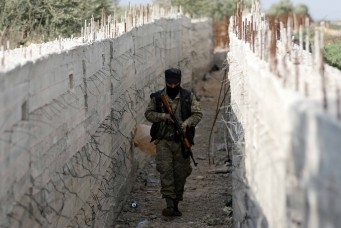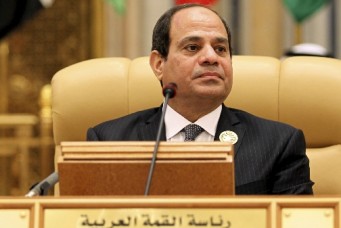Can NATO Militaries Generate Mideast Stability?
The agreement between Turkey and the United States on a yet-to-be-defined plan to establish a sixty-mile-long Islamic State-free zone in northern Syria is at once decisive and dangerous.
The historic developments this week along the western portion of the Turkish-Syrian border pack more drama than a hundred Turkish television soap operas — and like those dramas, we will have to wait until the end to see if this all ends in tragedy, war, and death, or peace, love, and happiness. The agreement between Turkey and the United States on a yet-to-be-defined plan to establish a sixty-mile-long zone in northern Syria adjacent to the frontier with Turkey anticipates that their troops, artillery, drones, and jet fighters, working with selected Syrian rebels on the ground inside Syria, will keep the area free of Islamic State (IS) control.
This move is at once decisive and dangerous. It positions two of the world’s and the region’s leading military powers, and NATO members, within half a dozen major local fighting forces of very different ideologies, and hundreds of smaller units with equally kaleidoscopic goals, identities, and allegiances. If you thought that NATO attacking Libya in 2011 was a risky venture, given the mess it has left behind there today, this plan for northern Syria is potentially more dangerous and destabilizing if it goes wrong. Aleppo, Damascus, and Syria are significantly more strategically important than Tripoli, Benghazi, and Libya, so the outcome of this dramatic move in northern Syria will be a game-changer—but it remains unclear if the change would be to wind down the war and chaos in Syria, or exacerbate and expand it even more.
The basic concept of keeping IS out of this stretch of northwestern Syria is a sensible one, for it would allow Syrian refugees and displaced people to find decent shelter there in their own country. It would also provide rebel groups with important safe havens for planning, training, and other purposes in their battles against both IS and the Syrian government in Damascus. That’s the easy part.
The hard part is that the political-military-demographic situation in the area in question captures the critical and often confounding complexities of the war in Syria, where many different local, regional, and global powers are involved in multiple conflicts in parallel, and also in superimposed battlefields. For starters, it is not clear if the United States and Turkey, and some of their NATO partners, plan mainly to fight to defeat IS or topple the Assad regime in Damascus, which will be further weakened psychologically by this initiative.
For another thing, as the United States and Turkey work with local Syrian rebels that they vet and approve to establish a zone free of IS control, it will be difficult to know who are the good guys and the bad guys in the eyes of Turkey, the U.S. and NATO. Some of the leading rebel groups that are fighting against both Assad and IS are Islamists that the United States and partners shun (except when the U.S. embraces them, as it did in Afghanistan, but that was a long time ago, in a far away land that the U.S. is trying to leave forever).
Equally problematic will be how the United States and Turkey look on some of the Kurdish fighters who have pushed back IS in parts of northern Syria, and who also would fight the Syrian government if need be to maintain control of their growing Kurdish region. The key Kurdish military force here is the People’s Protection Units (YPG), which has fought well against IS and also covets control of the same sixty-mile stretch that NATO armies now will patrol from the skies. The United States supports the YPG as a valuable partner whose forces on the ground have worked well in coordination with U.S. air strikes against IS. But Turkey views the YPG as bad guys associated with the Kurdistan Workers’ Party, who have had an on-and-off running war with the Turkish government for decades.
How the U.S. and Turkish militaries operate in and near the new zone, and whom they support, ignore, or attack, will determine the impact of this bold move.
A senior Obama administration official told the New York Times Monday, “The goal is to establish an [Islamic State of Iraq and the Levant]-free zone and ensure greater security and stability along Turkey’s border with Syria.”
The glaring dilemma here is that military force that the Turks have used against Kurds for decades, and the Americans against Islamists for a quarter century, has produced neither stability nor security; rather, it has contributed to making this region one of the most violent, fractured, polarized, militarized, and unstable landscapes of mass human misery in modern times.
Any move to protect civilians and assist refugees in Syria is sensible, certainly requires international assistance, and deserves widespread support. We will soon find out if this week’s Turkish-American decision falls into that category.
Rami G. Khouri is published twice weekly in the Daily Star. He was founding director and now senior policy fellow of the Issam Fares Institute for Public Policy and International Affairs at the American University of Beirut. Follow him on Twitter @ramikhouri.
Copyright ©2015 Rami G. Khouri — distributed by Agence Global



